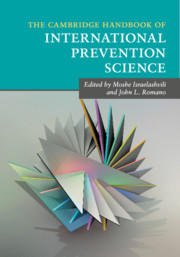Book contents
- The Cambridge Handbook of International Prevention Science
- The Cambridge Handbook of International Prevention Science
- Copyright page
- Dedication
- Contents
- Figures
- Tables
- Contributors
- Foreword
- Acknowledgments
- The Nature of Prevention Science
- Part I The Essence of Prevention Science
- Part II The Globalization of Prevention Science
- Asia & Australia
- North, Central, & South America
- Europe
- Africa & the Middle East
- 40 An Investigation of HIV/AIDS-Related Stigma, Blame, and Shame in Swaziland
- 41 What Intensifies Governmental Support of Prevention? Lessons from Israel
- 42 Preventing the Spread of HIV/AIDS in Botswana
- The Future of Prevention Science
- Index
- References
42 - Preventing the Spread of HIV/AIDS in Botswana
from Africa & the Middle East
Published online by Cambridge University Press: 21 January 2017
- The Cambridge Handbook of International Prevention Science
- The Cambridge Handbook of International Prevention Science
- Copyright page
- Dedication
- Contents
- Figures
- Tables
- Contributors
- Foreword
- Acknowledgments
- The Nature of Prevention Science
- Part I The Essence of Prevention Science
- Part II The Globalization of Prevention Science
- Asia & Australia
- North, Central, & South America
- Europe
- Africa & the Middle East
- 40 An Investigation of HIV/AIDS-Related Stigma, Blame, and Shame in Swaziland
- 41 What Intensifies Governmental Support of Prevention? Lessons from Israel
- 42 Preventing the Spread of HIV/AIDS in Botswana
- The Future of Prevention Science
- Index
- References
- Type
- Chapter
- Information
- The Cambridge Handbook of International Prevention Science , pp. 998 - 1019Publisher: Cambridge University PressPrint publication year: 2016

